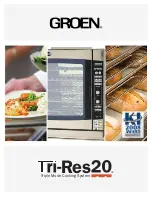
6
W
W
W
W
Washing Pr
ashing Pr
ashing Pr
ashing Pr
ashing Procedur
ocedur
ocedur
ocedur
ocedures
es
es
es
es
(continued)
(continued)
(continued)
(continued)
(continued)
6. Add laundry load to washer.
•
Dry load level should not be higher than top row of holes in wash tub.
Do not overload washer.
•
Do not put items on top of agitator or wrap them around it. Load items
evenly.
•
Combine large and small items in a load. Load large items first. Large items
should not be more than half the total wash load.
•
When washing a single heavy item, add 1 or 2 towels to balance the load.
7. If desired, add liquid fabric softener to Fabric Softener
Dispenser
(some models).
For models with a built-in dispenser (see picture to the left):
1.
Add liquid softener to the dispenser, following fabric softener label directions.
2.
Add water to bring liquid level to fill line on dispenser cap.
3.
Remove the dispenser from the agitator after each use. Rinse both cap and
cup with warm water. Replace dispenser in the agitator.
NOTE:
To separate cap from cup, put thumb into dispenser and push against side
of cup (see picture to the left). After cleaning, push cap and cup firmly together.
Replace dispenser by lining up the ribs and grooves and snapping it into position.
Fabric softener will be flushed from area under the built-in fabric softener
dispenser when Large Load Water Level is selected. If a build-up of fabric softener
occurs, clean with hot water.
DO NOT REMOVE SERVICE CAP.
For models with a removable dispenser (see picture below to the left):
1.
Attach fabric softener dispenser to top of agitator by pressing down gently.
2.
Add softener to the dispenser, following fabric softener label directions.
3.
Add water to bring liquid level to top of the peg in the center of the cup.
4.
Remove the dispenser from the agitator after each use. Rinse both lid and
bowl thoroughly with warm water. Reassemble and place dispenser on
agitator or store it nearby.
For models without a fabric softener dispenser,
follow fabric softener label
directions. Add diluted fabric softener to the final rinse.
Do not pour fabric
softener directly on the wash load.
8. Set cycle selector knob and washer controls according to
type, size, and soil level of each load, and detergent used.
See
Operating Instructions
for your specific model controls.
Removable Fabric Softener Dispenser
(some models)
Do not load items above
top row of holes in wash tub.
Built-In Fabric Softener Dispenser
(some models)
Built-In Fabric Softener Dispenser
(some models)


































